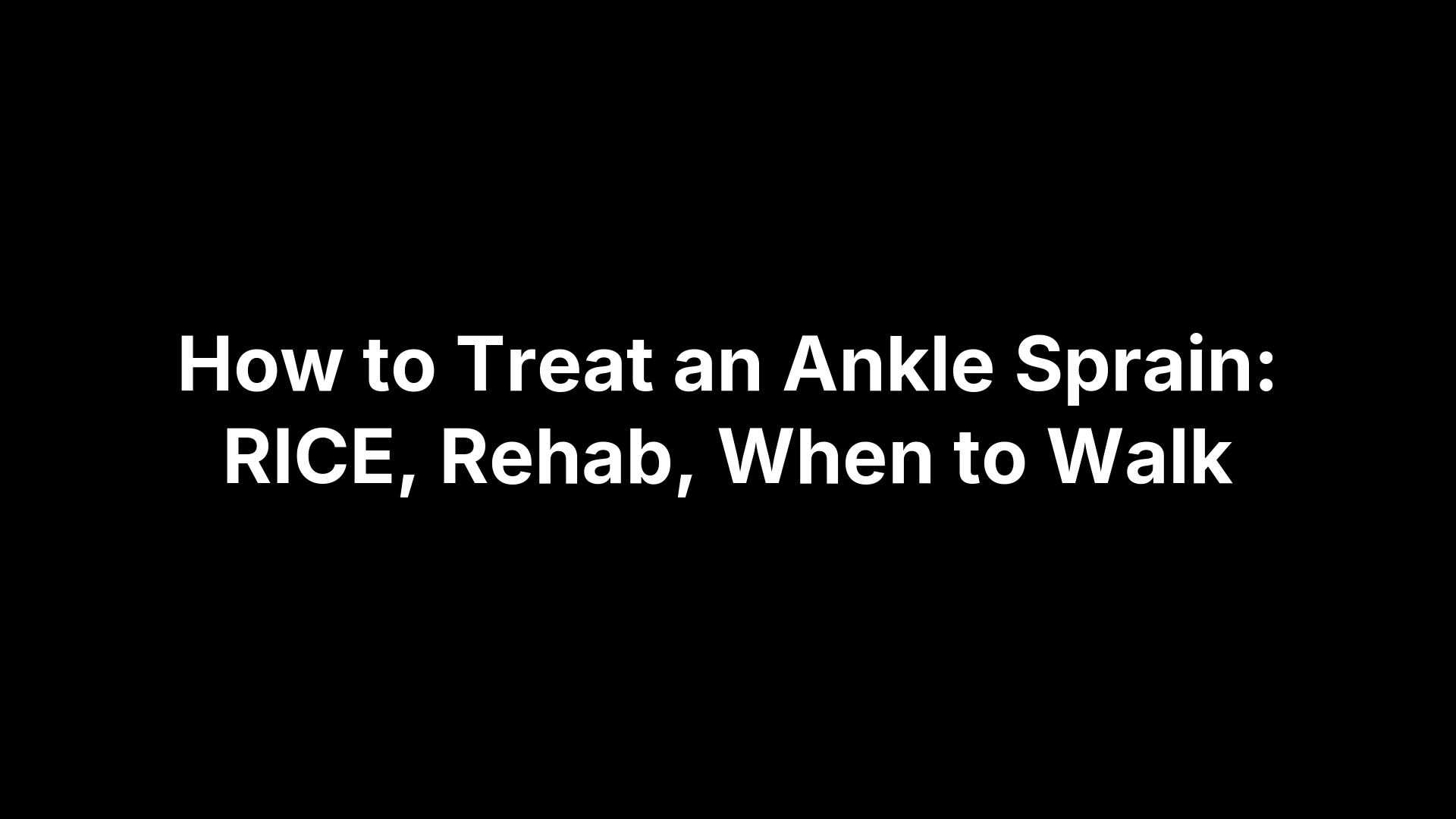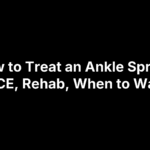If your steps feel shorter, unsteady, or painful—if you catch your toes, shuffle on turns, or tire quickly—you’re not alone. Changes in strength, balance, joint mobility, and foot mechanics after injury, surgery, or simply years on your feet can alter the way you walk and raise your fall risk. The good news: gait isn’t fixed. With a few focused exercises practiced consistently, you can restore smoother mechanics, increase confidence, and move through the day with less effort.
This guide walks you through five therapist-designed gait correction exercises you can do at home to build balance, strength, and mobility—no special equipment required. You’ll get clear, step-by-step instructions, exact sets and reps, weekly plans, safety tips, and simple progressions so you know when to advance. We’ll start with a quick personalized gait check and home plan from the team at Achilles Foot and Ankle Center, then cover sit-to-stand for leg power, heel and toe raises for ankle control, side stepping for pelvic stability, and target stepping/obstacle step-overs for precise foot placement. Keep a counter or chair nearby for support, and check with your provider if you’ve had a recent fall, surgery, significant pain, or neuropathy. Ready to take steadier steps? Read on.
1. Personalized gait assessment and custom home plan with Achilles Foot and Ankle Center
Before you jump into gait correction exercises, a quick screen helps you target what matters most—ankle control, hip stability, or leg strength. The team at Achilles Foot and Ankle Center uses comprehensive foot-and-ankle expertise, custom orthotics, and conservative care to guide patients; the at-home assessment below mirrors those priorities so your plan fits your needs and protects your feet.
Why it helps your gait
Gait has distinct phases—heel strike, stance, toe-off, and swing. When you pinpoint where things break down (for example, limited push-off or poor single-leg balance), you can choose the right drills instead of guessing. This saves time, builds confidence, and makes every step smoother and safer.
Step-by-step instructions
Do this once at the start, then repeat every 2–3 weeks to track progress.
- Posture check: In a mirror, stand tall, feet hip-width, weight evenly on both heels and forefeet. Note knee alignment and foot arch collapse.
- Ten-step walk: In a hallway, walk at a comfortable pace. Watch for heel contact, toe clearance, foot slap, shuffling, or uneven arm swing.
- Toe-off feel: On the last two steps, notice if you can press through the big toe to push off.
- Single-leg balance: With one fingertip on a counter, lift one foot and hold up to 20 seconds per side.
- Five sit-to-stands: From a chair without using hands if safe; note effort and steadiness.
- Ankle screen: Try 10 heel raises and 10 toe raises while holding the counter; note fatigue or wobble.
Sets, reps, and weekly plan
Use your results to build a simple plan that ties to the sections below.
- Strength (sit-to-stand): 3 sets of 8–12, 3 days/week.
- Ankle control (heel/toe raises): 2–3 sets of 10–15, daily.
- Hip stability (side stepping): 2–3 passes of 10–15 steps, 3 days/week.
- Precision (target stepping/step-overs): 8–10 passes, 3 days/week.
- Optional: 5–10 minutes of easy walking practice after sessions.
Safety tips and modifications
Your feet come first—especially with diabetes, neuropathy, or recent surgery.
- Use a counter/chair; add a gait belt or helper if you’re unsteady.
- Wear supportive shoes; avoid slippery floors.
- Stop with sharp pain, dizziness, or numbness; mild muscle fatigue is okay.
- If you have wounds, swelling, or new nerve symptoms, contact your provider.
Progressions and when to advance
Advance only when you complete your current level with steady form.
- Reduce hand support (two hands → one → fingertip → no hands).
- Increase reps by 2–3 or add a light miniband for side stepping.
- Narrow stance or close eyes briefly for balance drills only if safe and supported.
- When you can balance 20 seconds per side and perform 3 sets comfortably, move to the next exercise level in the sections that follow or book a personalized tune-up with Achilles Foot and Ankle Center.
2. Sit-to-stand for leg strength and safer steps
This everyday move is a powerhouse among gait correction exercises. Practicing controlled sit-to-stands builds the thigh and hip strength you need to rise confidently, keep momentum during walking, and manage curbs, stairs, and low seats without losing balance.
Why it helps your gait
Standing up demands strong quadriceps and glutes plus good ankle alignment—the same muscles and mechanics you rely on in the loading response and mid-stance phases of gait. Better force production and control here translates to longer steps, less shuffling, and steadier turns.
Step-by-step instructions
Set up a sturdy chair against a wall and stand close to a counter for light support.
- Sit tall, feet hip-width with toes forward, knees over mid-foot.
- Lean your chest slightly forward, brace your core, and press through your whole foot.
- Stand up smoothly without using your hands if safe; finish tall.
- Lower with control, tapping the seat lightly, then repeat.
Sets, reps, and weekly plan
Start small, focus on smooth tempo, and build consistency.
- Beginner: 2–3 sets of 8–10 reps, 3 nonconsecutive days/week.
- Rest 60–90 seconds between sets; add a 2–3 second lowering phase.
Safety tips and modifications
Keep movements pain-free and prioritize control over speed.
- If knees hurt or balance is limited, use hands lightly or raise the seat.
- Wear supportive shoes; avoid soft, rolling cushions and slippery floors.
Progressions and when to advance
Progress only when all reps are steady and symmetrical.
- Lower the seat height slightly or hold the bottom “hover” for 2 seconds.
- Add a slow 3–4 second descent or hold a light object at your chest.
- Try without hand support, then perform a controlled single-hand assist.
3. Heel and toe raises for ankle control and push-off power
Among the most effective gait correction exercises, heel and toe raises retrain your ankles to roll smoothly from heel strike to toe-off and lift the toes during swing. Strong calves power push-off, while strong shin muscles improve toe clearance to help prevent trips and foot slap.
Why it helps your gait
Your calves drive propulsion in terminal stance and pre-swing, and your dorsiflexors lift the forefoot in swing for clean, quiet steps. Training both ends of the ankle improves stability, stride efficiency, and the confidence to walk farther with less effort.
Step-by-step instructions
Work at a counter or sturdy chair, standing tall with feet hip-width and shoes on for support.
- Heel raises (calf strength): Press through the balls of your feet to rise up. Pause 1 second at the top, then lower slowly for 2–3 seconds, finishing with pressure through the big toe.
- Toe raises (dorsiflexion control): Keep knees softly bent. Shift weight toward your heels and lift your forefeet and toes. Pause, then lower with control without rocking your torso.
Sets, reps, and weekly plan
Start with paired rounds so both muscle groups get attention without fatigue spikes.
- 2–3 sets of 10–15 reps each (heel raises, then toe raises), daily or at least 4 days/week.
- Tempo: 1-second up, 2–3 seconds down. Rest 45–60 seconds between sets.
Safety tips and modifications
Keep movements pain-free and steady; avoid bouncing at the top or bottom.
- Use fingertip support; if balance is limited, do seated toe raises and supported heel raises first.
- Stop if you feel sharp Achilles pain, calf cramping that doesn’t ease, or foot numbness.
Progressions and when to advance
Advance when you can complete 3 sets of 15 with smooth control and no wobble.
- Single-leg heel raises; start with 6–8 reps/side.
- Step edge heel raises for a gentle calf stretch at the bottom (avoid if painful).
- Add a light band over the forefoot for resisted toe raises, or perform in a narrow (tandem) stance to challenge balance.
4. Side stepping (with or without a band) for pelvic stability
Lateral movement trains the hip abductors (especially gluteus medius) that keep your pelvis level when you’re on one leg. As part of your gait correction exercises, side stepping builds the stability you need for smoother stance, better foot placement, and less wobble on turns and uneven surfaces.
Why it helps your gait
During mid-stance, your stance-side hip must control the pelvis so the opposite foot can swing cleanly. Strong abductors reduce hip drop, help maintain an upright trunk, and make each step feel lighter and more controlled.
Step-by-step instructions
Start near a counter for light support and wear supportive shoes.
- Stand tall, feet hip-width, knees soft, toes forward, core braced.
- Step sideways with the lead foot without letting your toes turn out.
- Bring the trail foot in under your hips (don’t let feet touch).
- Keep your pelvis level; avoid leaning the torso.
- Take equal, quiet steps in one direction, then return.
Sets, reps, and weekly plan
Perform 2–3 passes each direction of 10–15 controlled steps, 3 days/week. Rest 30–60 seconds between passes. Move deliberately; quality beats speed.
Safety tips and modifications
Stay pain-free and prioritize balance before resistance.
- Use fingertip support as needed; shorten steps if hips or knees ache.
- If balance is limited, perform at a countertop and slow the tempo.
- Skip bands initially if you have knee irritation; add them only when form is steady.
Progressions and when to advance
Advance when all steps stay level and controlled without trunk lean.
- Add a light miniband above the knees, then at the ankles.
- Sit slightly into a mini-squat while stepping.
- Step over low obstacles or reduce hand support to challenge balance.
- Increase to 12–20 steps per pass as strength improves.
5. Target stepping and obstacle step-overs for precise foot placement
These coordination drills tighten up where and how your feet land. By practicing accurate taps and clean step-overs, you’ll build the timing, knee lift, and toe clearance that reduce trips and shuffling. They’re simple, scalable gait correction exercises you can set up in a hallway with household items.
Why it helps your gait
Target stepping improves control in swing so your foot goes exactly where you intend. Obstacle step-overs train hip flexion and ankle clearance, the same motions you need to clear curbs and uneven ground. Together they sharpen rhythm, stride length, and confidence.
Step-by-step instructions
Begin near a counter for light support and wear supportive shoes.
- Target stepping
- Place 4–5 paper plates or tape squares in a semicircle, about 12 inches apart.
- Stand to one side. Tap a target softly with your toe; return to start.
- Tap each target in sequence, then switch feet.
- Keep torso tall and land quietly.
- Obstacle step-overs
- Line up 5–6 rolled towels or low books ~15 inches apart.
- Step over the first obstacle, lifting the knee and clearing with the toes.
- Bring the trail foot through; continue down the line.
- Turn and lead with the other foot.
Sets, reps, and weekly plan
- 6–8 passes of target taps (each foot), 3 days/week.
- 6–8 passes of step-overs (alternate lead foot), 3 days/week.
- Rest 30–45 seconds between passes; move slowly and quietly.
Safety tips and modifications
- Use a counter or caregiver for steadying; shorten steps if balance wobbles.
- Choose high-contrast targets/obstacles; clear clutter and slick rugs.
- Start with very low obstacles; if you catch a toe, reduce height/spacing.
- If you have neuropathy, recent surgery, or wounds, consult your provider first.
Progressions and when to advance
- Increase precision: smaller targets or longer reaches.
- Raise obstacle height slightly or vary spacing; add side-stepping over obstacles.
- Reduce hand support (two hands → one → fingertip → none).
- Add a light cognitive task (name months) once form is solid and safe.
Keep your steps moving forward
Small, steady practice wins. Stick with your plan 3–5 days a week, retest every 2–3 weeks, and celebrate the easy wins—quieter footfalls, fewer stumbles, smoother turns. If something hurts, scale the range, slow the tempo, or add support. With consistency and smart adjustments, gait can improve at any age.
If you want a customized tune‑up or you’re dealing with pain, neuropathy, wounds, or recent surgery, get expert eyes on your stride. The Central Virginia specialists at Achilles Foot and Ankle Center offer comprehensive non‑surgical and surgical care, custom orthotics, advanced imaging, and same‑day appointments across multiple locations. Book a personalized gait assessment, turn this routine into a targeted plan, and take confident steps—every day.






